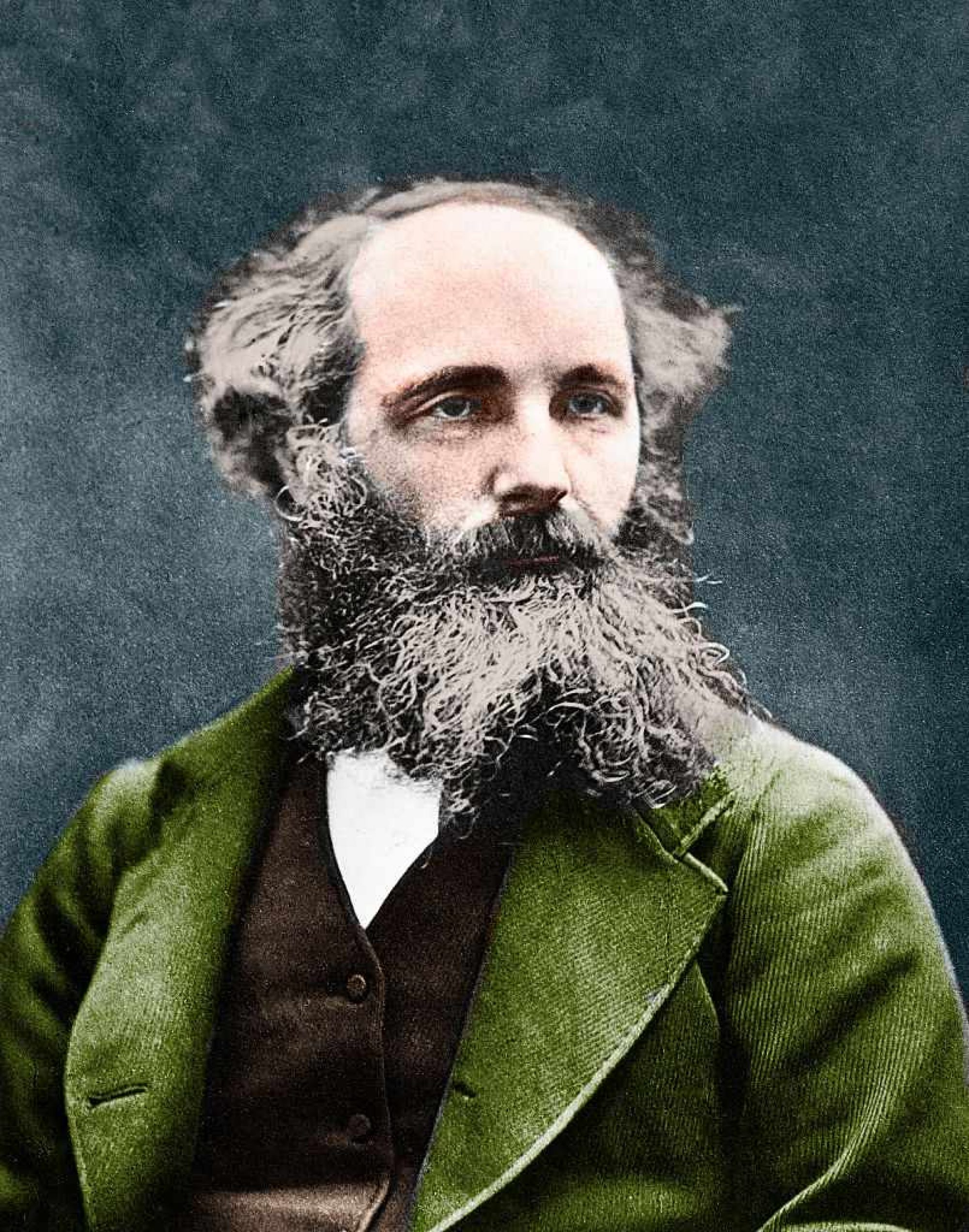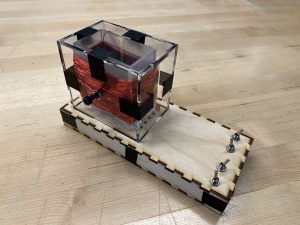This week I made some modifications to the case of the Faraday’s law experiment. Specifically I increased the height of the base to accommodate the wires that connect the switches and the LEDs. I also made the length of the base shorter to save some material, since I decided to replace the full-size breadboard with the half-size breadboard. I then laser cut the case and wired up the switches and the LEDs to the emf generator according to the wiring diagram and the circuit schematic below.
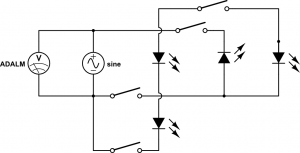
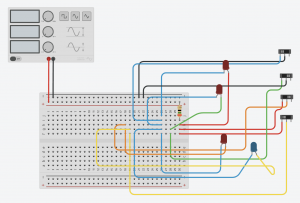
The completed experiment set-up is shown below. Different combinations of LEDs will light are when the magnets are spun, according to the states of the switches.
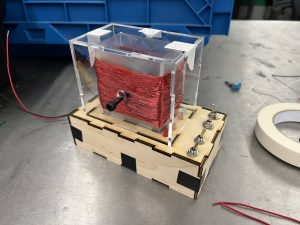
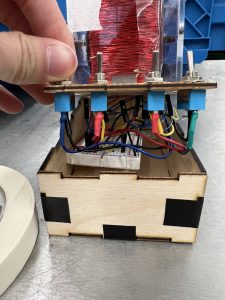
I also worked with Mudit to create a laser-cut design for the case of the Ampere’s law experiment, which will be fabricated in the next few days, if not this weekend. Finally, I worked with Aaron and Mudit to make sure the web application can support measuring with two oscilloscope channels and displaying the plots.
Overall I am on schedule. In the last week leading up to the final demo, I will touch up the experiment set-ups to make them look better. I will also work on the educational content, in addition to the final report and video.
